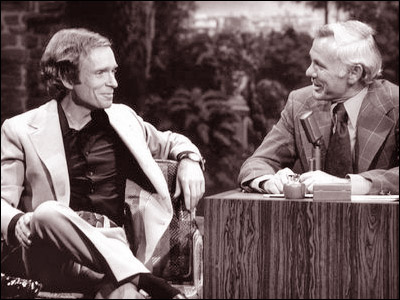This is a famous Barbershop Quartet group called Main Street and here they are performing at some sort of competition, I guess. This may start slow for you but give it a chance. It's pretty wonderful…
About Inking…
Some folks were intrigued and/or puzzled when I mentioned that a couple of the artists whose comic book art was inked by Murphy Anderson weren't happy with the combination. Let me explain some things about comic book inking…
Most of the time, the way you produce inked line art is that the image is drawn in pencil and then once it's right (or close to right) in that medium, it's inscribed and finished in permanent ink and then whatever can be seen of the penciling is erased. In its purest form, one person does both but it is sometimes expedient or preferable to make it a collaboration. An artist who draws a syndicated newspaper comic strip generally has the option of doing it all himself (or herself) or assigning parts of the process out to others. Some choose to do it all themselves. Others decide to carve up the process and involve others.
There can be many reasons for turning it into a collaboration. The most often is time. There are fixed deadlines and a lot of work to do to meet them…and it's often easier for two or more to get the work done than for one person. There are also artists who are lazy and there are those who just plain more comfy drawing in pencil than ink or vice-versa. It can also be a creative decision. I think Garry Trudeau has someone else ink Doonesbury because he thinks it makes up for any weakness in his penciling, though time is also probably a factor.
That was all very common in newspaper strips before there was a comic book industry. When funnybooks came along, they made it much more common for one guy to pencil and another to ink. That decision was made by editors and publishers, not by artists. Regardless of whether it was preferable for the guys at the drawing tables, it was easier for the office.
For one thing, it kept the assembly line moving in one direction. If one guy penciled and inked his own work, he had to pencil it and then it had to go to a letterer to put in the copy, and then it had to be shipped back to the artist who was probably penciling the next job and had to stop doing that to ink the previous story. It was simpler for the editors to have an artist usually pencil or ink, not both.
For another thing, it increased volume. Let's say Artist A was a great artist and Artist B was not so great, maybe not even good enough to draw for your company. You might well decide that if you have B ink A, the resultant work is good enough to print. It might not be as good as if A finished it himself but, hey, now you've got twice as much to publish!
Or maybe if A and B are both just okay, B can fix A's art a bit to make it more publishable. The penciler/inker system can enable you to employ artists who aren't good enough to do it all on their own.
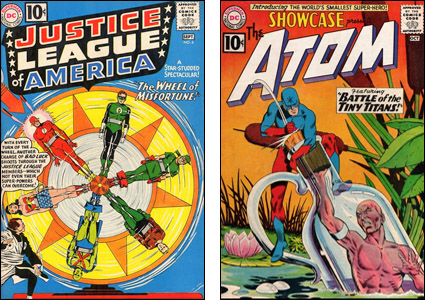
In going to that system, they largely created the situation where the penciler and inker might not have any contact. The penciler would hand the work in to the editor, often with no idea who'd be inking it. The inker would receive the job from the editor, ink in the pencil art, then turn it back in. Jack Kirby's penciling at Marvel in the sixties was inked (and inked well) by Joe Sinnott, and the two men neither met nor spoke until years later. Joe had to guess what Jack had in mind…and of course, he often rendered the art in ways that Jack never would have.
This, of course, can create wonderment on the pages when the right match is achieved and can ruin fine pencil work when it is not. It can also put the pencil artist in the position of feeling divorced from his own work because by the time it reaches the readers, a lot of it doesn't look like he intended it to look. It didn't bother Kirby because he preferred moving onto the next story than to spend more of his life finishing the last one. But Jack thought of himself more as a storyteller than as an illustrator. Most comic book artists thought of themselves mainly or wholly as artists.
Many comic fans will tell you that one of the great pairings occurred when John Buscema's pencil art on Conan was inked by Alfredo Alcala — a man who for much of their collaboration was living in another country. They were horrified when Buscema began saying that he hated what Alfredo did with his pencil art, how much he changed it and "lost" things that John wanted to see in the finished product.
There is a downside to doing that to pencilers. Imagine if you were a professional painter, producing lovely scenes on canvas. Imagine then that the guy who paid you then took your paintings and gave them to someone who changed so much of what you did that some of it was unrecognizable to you and much of what you did was obliterated. You might take less pride in your work…or figure, "Why am I trying to hard to get this right?" It might make it harder for you to give the work your all. You might feel less like an artist and more like a tiny cog in a big machine. (Some comic book publishers have not been unhappy when the artists think of themselves that way instead of as important contributors. Tiny cogs are less likely to demand raises.)
The problems described in the previous paragraph were not huge ones in the first few decades of comic books. The talent pool consisted of men (almost all men) who grew up in the Depression Era and were happy to have work…any work. They often did not sign their work. They usually drew whatever they were asked to do. They might not care to ink only or to work on horror comics but if the available work at that moment was inking horror comics, they inked horror comics. Some of them were so good that even when they were not at their best, the work was still good enough.
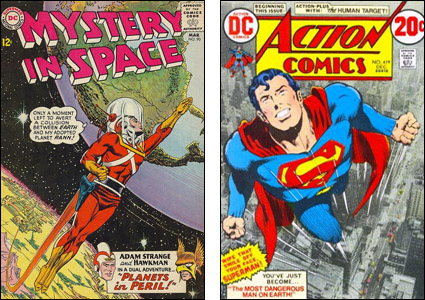
When Gil Kane's pencil art was inked by Murphy Anderson at DC, you had the teaming of two men who, paychecks aside, would have each preferred to do the work on their own. Murphy thought of himself as an artist, not a finisher of someone else's art. Gil looked at the finished pages and thought, "That's not my drawing. It's someone changing my drawing!" Many of us readers looked at the printed comics and thought, "That's great!" — and it was great because they were two very talented men. But it might not have been the ideal working situation for them. Murphy, I know, was not thrilled to go through long periods as an inker, essentially not using two-thirds of his talents.
Today, if a kid wandered into the business with the skill set of Murphy Anderson, I doubt he'd find himself in that situation. For one thing, he might not be as desperate to make a steady living as a kid born, as Murphy was, three years before the big Stock Market crash of '29. For another, his name would be on all his work and he might care a lot about his reputation…and about the sales value of his original art. The business might also care more than it once did about the artist being happy with how his work came out. They'd recognize that better, more saleable work would probably result and they'd also want to keep an artist that good from jumping to the competition.
(By the way: In the above paragraph, everywhere I said "his," I probably should have said "his or her." Another thing that's happily changed.)
I could fill this blog for a whole year with postings about how the comic book field has changed. That's one. The way artists approach their work has changed…generally for the better, I think. Murphy Anderson produced wonderful, wonderful work during his time in comics and I don't mean to criticize a single panel of it. I just think he, like a lot of his contemporaries, could have been deployed better if they'd been treated less like warm bodies to fill up pages and more like the total artists they were.
And I say that even though Adam Strange, as penciled by Carmine Infantino and inked by Murphy Anderson, looked real, real terrific to me.
Producing Without Borders
A lot of independent movies these days are international co-productions, financed by a network of entities in different countries. Are you interested in this kind of thing? Well, if you are, I can recommend a webinar to you. Producer-writer-director Brendan Foley knows an awful lot about such matters, having been involved in many of them quite successfully. This Wednesday, he will be holding forth on the topic, joined by Ronni Coulter, SVP Business Affairs Sony Animation (previously Sony Pictures and Dreamworks) and top European co-producer Lars Hermann (ex Nordisk, Filmfyn film fund, Copenhagen Film Festival, now with Danish state broadcaster DR).
Brendan himself has helmed motion pictures, both live-action and animated, across eleven countries. He really knows this stuff and if I had any thought of trying to work one of these deals, I'd sure want to hear what he and his guests have to say. For more info and to sign up for this online class, go to this page. No, don't thank me. Just invite me to the premiere.
Today's Video Link
You may have seen this "jam" of street musicians playing Otis Redding's "(Sittin' on) The Dock of the Bay" song. I just spotted it and it is, of course, wonderful.
Watching it, I notice that everyone except the first guy is wearing what seem to be the same headsets. Looks like whoever made this recorded the first singer, then took the recording of him to various locales and nations in these headsets, had the other guys put them on and play along…then recorded them all and did a great mix. Very clever…
Shifty Doings
Last Wednesday when I was on Stu's Show talking about late night TV, I made mention of a device I made back in the sixties in order to not completely miss Johnny Carson or Dick Cavett on nights when I couldn't stay up late enough to watch one or the other. Several folks wrote in to ask me to explain more about it so I offer up this reprint from a 2010 posting on this site…
I loved watching The Tonight Show with Johnny Carson and also The Dick Cavett Show, which were both on late and opposite each other. It annoyed the heck out of me that on a school night, I couldn't stay up late enough to watch either…and when there wasn't school the next day, I could only watch one. I used to sit up near the TV in my bedroom (which had no remote control) and switch back and forth between the two shows, which still meant I missed a lot. Finally one day, I had a brainstorm.
I went to a nearby Radio Shack. They have since removed the space and they now call them RadioShacks but otherwise they were the same then as they are now: Lots of neat stuff sold by people who have no idea what any of it is or what to do with it. I knew what to do with some things they sold. I bought a radio that could pull in TV sound, a timer and couple of audio cables. At home, I combined them with my beloved reel-to-reel tape recorder. Thereafter before I went to bed, I would study TV Guide and decide which late night show to record — Carson or Cavett. Then I'd set my invention accordingly. The timer was deliberately adjusted so that when it read "11:30," it was actually 11:29 to allow for pad. At the prescribed moment, with a series of clicks that sometimes woke me up briefly, it would turn the radio and the tape recorder on, record the audio to the selected channel for 95 minutes, then turn both off. The next day when I came home from school, I could enjoy the sounds of Johnny's program or sometimes Dick's of the night before.
On nights when I could stay up late, I would watch one show and record the other. I usually watched Johnny and recorded Dick because I found that Mr. Carson's show was usually more visual. Listening (only) to Johnny, you missed those great reaction shots and facial takes, and this was also back when he'd do a lot of physical stunts and demonstrations.
It was a great system…and yes, I regret that I didn't save every one of those tapes. After I listened to one, I'd record another show over it.
Ah, the things I had to do before I got my first V.C.R. a few years later. It's amazing to me how it is now very, very difficult to miss a major TV show you want to see. First off, we set our DVRs and TiVos, and I imagine some people are still time-shifting onto video cassettes. Secondly, shows get rerun more frequently and are often available online, either on the network's website or via YouTube.
So I have this mental image of myself at age 80 or so. In it, I seem to have a long, white beard — and if I want to have that beard when I'm eighty, I'd better start growing it now.
I'm on a porch, talking to people much younger than I am. And I'm saying, "You kids today don't know how well off you have it. Why, in my day, it was actually possible to miss your favorite TV program…"
Recommended Reading
Matt Taibbi usually writes columns where I agree with his factual recitals and reasoning but think he carries his conclusions too far. He thinks Trey Gowdy and the Benghazi Hearing made Hillary Clinton look awfully good and even presidential. I agree. He thinks they won her the White House. I think it's 380 days until the election and a lot of things — some of them, game-changing — can and will happen before then. But read Taibbi because I think he's right up to a point.
Today's Video Link
Last week, Bernie Sanders was a guest on Tavis Smiley's interview show. I thought it was a good conversation without too many softball questions so here it is. If I had to vote tomorrow, I'd probably vote for Bernie Sanders but I don't have to vote until June 7, 2016, which is 228 days from now. That's when the California Primary is and for all I know, Martin O'Malley will have the nomination sewn up by then. So I don't think I'll get too excited about anyone until the first of May or so. Here's Bernie…
Saturday Morning
Nice to awake to the news that Hurricane Patricia may have done less damage than one would expect from the storm of that size. Still, there are homes being destroyed, mountains that may yet slide, people in harm's way…and now its remnants, still strong, are hammering portions of Texas. I will suggest donations to my favorite charity, Operation USA, which helps folks out in these situations, regardless of their location, race or government. There are charities in this world where much of what you donate goes to executive salaries and perks and administrative jobs. This is not one of those charities. The cash you give actually does good. If you've been thinking of making a donation of gratitude to this site, send it to them instead, please.
The comic book community is saddened by the passing of Murphy Anderson…and why wouldn't they be? He was a very nice man and a very gifted artist who was disliked by absolutely no one. It also goes without saying — but I have a blog to fill so I'll say it anyway — that many of us are saddened that so many folks who created the comics we grew up on aren't around anymore. It was an honor and a joy to sit with someone like Murphy and discuss that work and the industry and…well, just about anything.
Some people are sending me questions about comic book inking as practiced by Murphy and others of his generation. Before the weekend is out, I may have a post up here discussing that in some depth. And then again, if I don't finish a script first that's due Monday, I may not.
Please stop sending me e-mails telling me there's now incontrovertible proof of Hillary Clinton's guilt and that her arrest is only days away. Even Fox News doesn't believe that. My point was that we've been hearing she was about to be frog-marched (I still don't know how that differs from just being marched) off to the pokey since about 1988 and it never happens. She just moves on to higher offices and her enemies forget about the last few reasons she was certain to be imprisoned and come up with new ones. If it's ever true, it'll be true and it won't matter that some of us refuse to believe there's anything there until the cuffs are on her and she's praying for a plea bargain.
My knee continues to improve…not as fast as I'd like but, hey, at least it's getting slowly better instead of slowly worse. I'm still ahead of where I expected to be in terms of recovery. And I'm of the mind that if and when the other knee requires replacement, it'll just be 4-6 weeks of distraction and some discomfort, not a huge problem. And that's the news from here.
Wimpy's World
Everything you need to know about how to cook burgers.
Friday Night
I find myself depressed by the awful storm hitting people in Mexico at the moment. When you look at all the nonsense that goes on in Washington and the waste of resources, you wonder — I do, anyway — why we don't make it our first priority to conserve resources in order to help out in these times when people are dying or suffering.
Murphy Anderson, R.I.P.
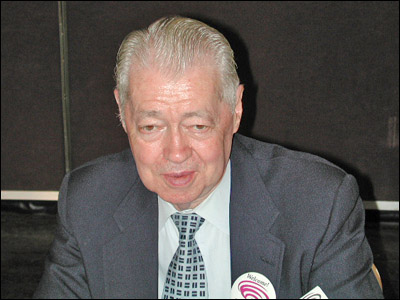
Another great comic book artist of the past has left us. Murphy Anderson has died at the age of 89. No details as to the cause but he'd been in poor health and declining convention invites for some time now.
Murphy hailed from Asheville, North Carolina where he was born on July 9, 1926. He got into comics in 1944 drawing for Fiction House, doing work that was so polished that in 1947, he moved over to draw the Buck Rogers newspaper strip for two years. He worked for several companies before finding a home at DC Comics around 1950. Apart from brief stints away when he worked for Will Eisner on PS Magazine (an army publication) and later when he produced that magazine himself, he worked pretty much exclusively for DC as long as he could. When he found his output slowing in later years, he began shifting his attention to his own company, Murphy Anderson Visual Concepts, and doing color separation work and other technical chores in comic book production.
He was best known for his work at DC where he was often employed as a kind of utility player, able to handle any position. He frequently worked in the office so he was called upon to do rush covers and ink jobs, to retouch the artwork of others and to work on merchandising art. At times, the DC staff could be very fussy how Superman, Batman and their other superstars were drawn but Murphy was a guy who always drew them "on model."
Murphy produced fine work when he penciled and inked, especially on features of a science-fiction nature like The Atomic Knights or Captain Comet in Strange Adventures. He did a long stint drawing Hawkman, and did the early issues of The Spectre when that feature was revived in the sixties. He also did finished art on hundreds of covers, mainly for Julius Schwartz, the editor with whom he was most closely associated. His style often reminded one of one of his artistic heroes in comics, Lou Fine.
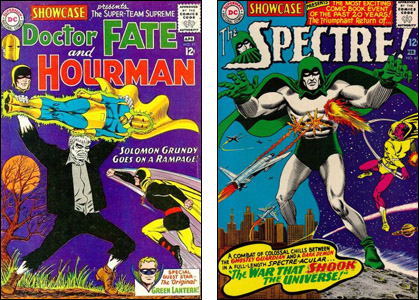
At times though, DC deployed him as an inker. He inked some of their best artists like Carmine Infantino, Gil Kane and Curt Swan — and many fans would tell you that the work of those men never looked better than when "Murph" did the inks — though oddly, neither Infantino or Kane were happy with the mesh of styles, perhaps because Murphy was more of an artist than a tracer. DC also sometimes used him when there was a weak pencil job that needed a lot of fixing. Murphy was the guy who could do anything.
He was an absolutely charming man, gifted not only with artistic talent but a deep, rich speaking voice and a penchant for groan-inducing puns. In the office or at a convention, he was always impeccably dressed in a suit and tie. At the conventions, which he loved doing, he was usually accompanied by his loving wife, Helen, and fans came to love her as much as they loved Murphy. And they loved Murphy a lot. We all did.
Hillary's Very Good Day
William Saletan nicely summarizes yesterday's interrogation of Hillary Clinton at the Benghazi hearing:
Eleven hours after the hearing began, [Chairman] Gowdy gave up. Clinton was exhausted but still in good humor. Her inquisitors, however, were furious. After all the subpoenas, emails, and testimony, the evidence had once again failed to match their beliefs. But the committee did its job. It clarified the truth about Benghazi: Hillary Clinton did nothing wrong. And Republicans can't stand it.
And even a lot of right-wing pundits today are saying the whole thing was a farce and a waste of time. I haven't been a huge Hillary fan but her performance before the committee — and for that matter, her last debate appearance — have sure raised my opinion of her.
I'm reluctant to believe that any non-incumbent could nail their party's nomination down this far before the convention but I'd sure lower my hopes if I were a Bernie Sanders supporter…which I suppose in some ways, I am. (I'm kinda thinking Sanders would make a better Attorney General — or whatever cabinet post deals with corporate crime — than president.) And hey, Lincoln Chaffee has dropped out of the race, leaving Clinton and Sanders to duke it out to pick up his supporters — a guy named Ernie and a 92-year-old woman in Bayonne.

Seems to me the Republican party long ago decided they couldn't beat Hillary Clinton on policies so they need to beat her on scandals. They kinda did this with Bill, too. I am amazed how often since the Clintons became prominent politicians, I've been told by conservative friends or read that Bill and/or Hillary were going to jail within the next month or two. They were going to jail for Whitewater. They were going to jail for having all sorts of people murdered as part of their drug-running operation in Arkansas. (That was Jerry Falwell's Clinton Chronicles video that insisted there was incontrovertible proof.) Bill was going to jail for the Monica thing. Hillary was going to jail for Filegate, Travelgate and having Vince Foster murdered.
It goes on. Ben Carson said the other day on the radio that Hillary wouldn't be the nominee because she'd be behind bars. (He then went on to predict Joe Biden would be the nominee. An hour later, Biden announced he wasn't running. This isn't my joke but someone the other day complimented Carson on the fine work he was doing to destroy once and forever the stereotype of the Smart Brain Surgeon.)
And this week's National Enquirer has a headline story that there's finally proof Hillary covered up something-or-other in the Vince Foster matter and is going to jail. They'll sell a lot of papers and then nothing else will happen except maybe that Hillary will go on to a higher office. That's how this always works.
Let's Play Password!
We all need to have secure passwords for a lot of things in our lives, most of them online. In this article, two researchers at the University of Southern California, Marjan Ghazvininejad and Kevin Knight, have come up with a way to generate crackproof passwords. It involves creating little poems like…
Receiver Mathew Halloween
deliver cousin magazine
I ran that one through this webtool that calculates how long it would take a hacking program to guess the password in question. Assuming a scenario in which the program is making one hundred trillion guesses per second, it would still take 1.12 hundred billion trillion trillion trillion trillion trillion centuries to try every combination with that many characters in it. That oughta be safe.
Then again — and I couldn't resist checking this — if you use the same computer program to try and crack the password "Marjan Ghazvininejad," that would take 1.25 thousand trillion centuries. That's not as secure but isn't it enough?
Today's Bonus Video Link
PBS recently aired a concert-style rendition of the musical, Show Boat. I'm not sure how I feel about this material being performed by people in tuxedos and formal gowns but there was a lot of talent on the stage and the New York Philharmonic playing the score. Fred Willard, of all people, played Captain Andy.
Here's the video of the entire production which runs just shy of two and a half hours, just in case you want to watch some or all of it. Your local PBS outlet may also be rerunning it tomorrow if you want to watch it on a real TV instead of your computer screen…
My Latest Tweet
- One thing I've learned from the Benghazi hearing: "With all due respect" is something you say to precede a statement showing no respect.
